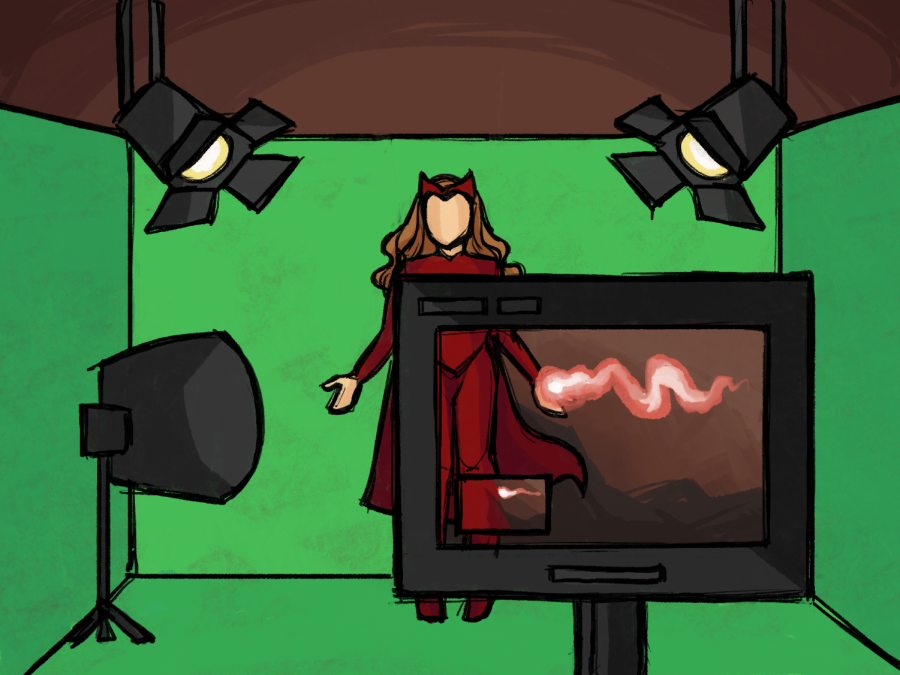OPINION: An overreliance on CGI harms film
While CGI can be a powerful tool for the filmmaking industry, it can create a poor quality film.
Computer-generated imagery, known as CGI, is a powerful tool in filmmaking. It can be used to make corrections to footage and create settings and characters from scratch. CGI is a useful resource that has established power in making impressive films that would not be possible without it. However, just as how a hammer would not be used to put in a screw, it is not suitable for every job and should not be overused.
CGI creates unique challenges for actors. Actors are forced to interact with elements that they cannot see but the audience will. Movies that rely heavily on CGI can create sets with just green backgrounds and motion capture suits. In an interview with Cinema Blend, actor Mark Ruffalo described how performance can take a backseat to CGI and other modern technology, leading to a dehumanizing experience for actors. Using CGI creates challenges actors may not have faced before, like imagining the eyelines of a character who is not there. These challenges make acting harder and can make the final product worse if not properly dealt with.
An overreliance on CGI can also create worse conditions for visual effects artists. Visual effects artists – who work on CGI and combine it with footage – are not unionized, unlike many other groups within the film industry. Visual effects workers are paid less than their unionized counterparts and are often subject to violations of workers’ rights, like pressures to not reveal their salaries, which a union may protect them from.
According to Vulture, 90% of the movies released in 2022 contained visual effects. The high volume of CGI worsens working conditions by creating a time crunch and long hours. The poor conditions are worse for companies that depend on CGI usage and have a high volume of releases, particularly Marvel. While labor rights issues are not inherent to CGI, they are intrinsic to how CGI is used within Hollywood and are exacerbated by the current use of CGI, diminishing the final product through the pressure put on workers.
Bad CGI and bad acting can be creepy in a way practical effects are not. The uncanny valley phenomenon refers to the human-like appearance of an artificial figure that produces an unsettling and creepy feeling for viewers. While this usually includes robots and dolls, the same effect can be created by bad CGI.
The uncanny valley phenomenon is especially bad when the human analog has jerky movements or unnatural eye contact. It can make films creepy and interfere with empathy, diminishing the viewing experience. These problems are avoidable with practical effects that are grounded in reality.
The field of visual effects, particularly CGI, is governed by rapidly changing technology. State-of-the-art technology from a few years ago may quickly become obsolete, appearing bad and creepy to modern audiences. This is often not the case for practical effects. Released in 1993, the original “Jurassic Park” largely relied on animatronics for its cast of dinosaurs, only employing about 600 computer-generated effects. This is significantly less than the roughly 2,500 scenes containing computer-generated effects in “Avengers: Endgame.” “Jurassic Park” still appears impressive and believable to modern audiences because it relies on carefully constructed props that have withstood the test of time.
In contrast, movies from 10 years ago that relied heavily on CGI do not hold up to modern viewers. While older Marvel movies like the original Avengers movies were impressive at the time, the quick improvements in visual effects technology means that the CGI appears unnatural to modern audiences. As CGI continues to improve rapidly, the same fate is likely in store for today’s CGI blockbusters like “Avatar: The Way of Water.”
Often, the choice to use CGI is made to save time and resources, which fails to take into account its effects on the filmmaking process, the workers involved and the final product. While CGI is a useful tool when acting stunts may be unsafe to perform, errors arise in filming or a filmmaker’s vision is unrealistic for practical effects, over-reliance on CGI creates a worse final product.


